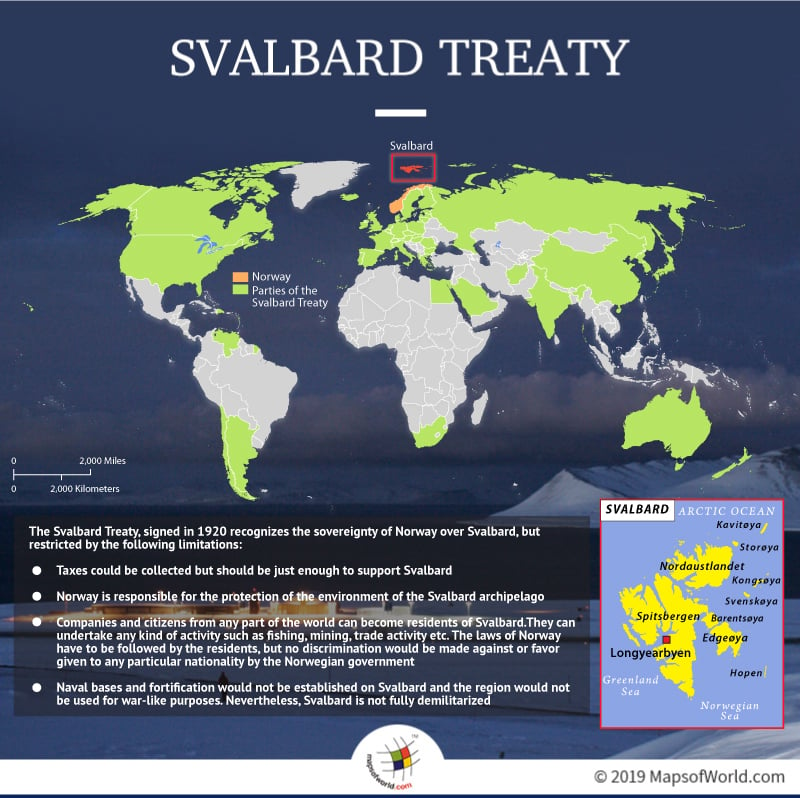What is The Svalbard Treaty?

Located in the Arctic Ocean, Svalbard is an archipelago with population a little over 2,000 people. However, the archipelago is significant and is at the center of the Svalbard Treaty, which was signed in 1920 and recognized the sovereignty of Norway over Svalbard.
The discover of the archipelago is attributed to Norsemen who are claimed to have found it in the 12th century. However, it got its earlier name of Spitsbergen from Willem Barentsz, a Dutchman who in quest of the Northern Sea Route sighted its coast. The start of the 16th century saw people from many countries moving to the archipelago to indulge in business activities such as fishing, whaling, mining, research, and even tourism. With the region not under the rule of any country, citizens of all nations were free to carry out activities here and there were no laws and regulations to run the businesses.
The situation drastically changed in the 20th century with the discovery of mineral deposits in the region. Mining companies moved in and employed workers to cash in on the profits. Many-a-times conflicts arose between the miners and workers and largely remained unresolved due to absence of laws and regulations. This necessitated the establishment of some kind of government and courts that could settle any arising dispute, as well as, keep stock of the situation.
After several failed attempts, success was finally found with the Svalbard Treaty, which was signed on February 9, 1920, during the Versailles negotiations after the WW1 had ended. The treaty accepted the recognition of Norwegian authority over Svalbard. There were fourteen signatories to the treaty including. Italy, France, the Netherlands, Norway, Denmark, Sweden, Japan, the United States, and the United Kingdom, along with its dominions – India, Australia, New Zealand, Canada, and South Africa.
Nevertheless, Norway’s, sovereignty over the island was not absolute, but had limitations. These were – taxes could be collected but should be just enough to support Svalbard. Norway is responsible for the protection of the environment of the archipelago. Companies and citizens from any part of the world can become residents of Svalbard. They can undertake any kind of activity such as fishing, mining, trade activity etc. The laws of Norway have to be followed by the residents, but no discrimination would be made against or favor given to any particular nationality by the Norwegian government. Naval bases and fortification would not be established on Svalbard and the region would not be used for war-like purposes. Nevertheless, Svalbard is not fully demilitarized. Following the establishment of Norwegian authority over the region, the name was changed from Spitsbergen to Svalbard in the 1920s. Over the years, many other nations became signatories to the treaties and as of 2018, the Svalbard Treaty has 46 participants.
Other Major Treaties Signed in The World:
